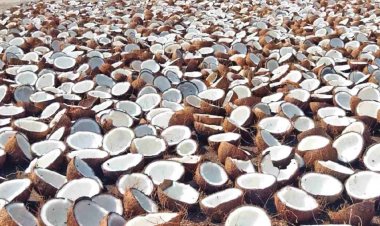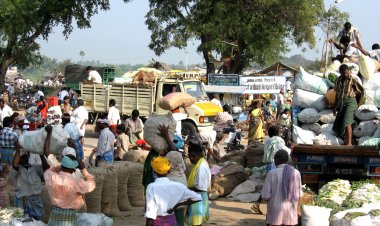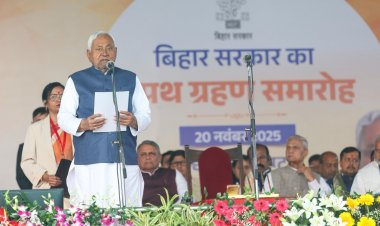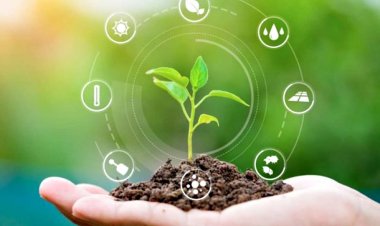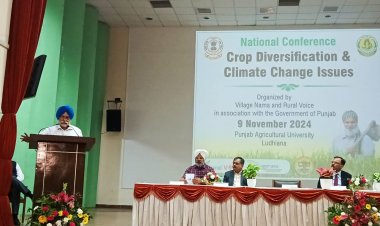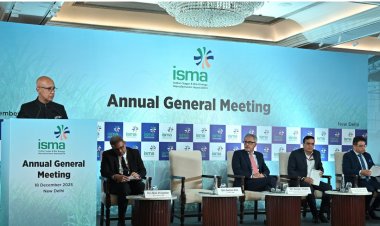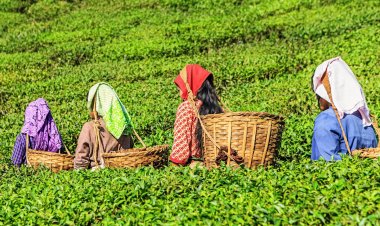Agricultural growth rate remained at 2% in the first quarter, GDP growth also came down to 6.7%
In the first quarter of this year, the growth rate of the agriculture and allied sectors was recorded at a mere 2 percent. This sluggish growth has significantly impacted the overall gross domestic product (GDP) of the country, bringing it down to 6.7 percent. In comparison, during the first quarter of the previous financial year, 2023-24, the agricultural sector grew at a rate of 3.7 percent, and the GDP growth rate stood at a robust 8.2 percent.

In the first quarter of this year, the growth rate of the agriculture and allied sectors was recorded at a mere 2 percent. This sluggish growth has significantly impacted the overall gross domestic product (GDP) of the country, bringing it down to 6.7 percent. In comparison, during the first quarter of the previous financial year, 2023-24, the agricultural sector grew at a rate of 3.7 percent, and the GDP growth rate stood at a robust 8.2 percent.
According to the data released by the Union Ministry of Statistics and Program Implementation, the growth rate of the entire primary sector, which includes agriculture and mining, was just 2.7 percent in the first quarter of this year, compared to 4.2 percent during the same period last year. The contribution of the primary sector to the Gross Value Added (GVA) has also seen a decline, dropping to 18.1 percent.
Dharmakirti Joshi, the Chief Economist at the rating agency Crisil, attributes this slowdown in growth to several factors, including weak urban consumption, tepid corporate results and slowdown in government spending. He notes that while private consumption trends are mixed, there are signs of improvement in rural consumption. Last year, private consumption grew by only 4 percent, but there is optimism that this figure will improve in the current year.
Joshi suggests that a favorable monsoon season could lead to increased growth in the agricultural sector, which in turn could help to curb food inflation. As a result, private consumption, particularly in rural areas, is expected to rise. With higher agricultural growth rates, people's incomes are likely to increase, leading to lower food inflation and greater spending capacity among consumers.
Crisil's analysis indicates that, unlike last year, rural consumption growth is expected to outpace urban consumption this year. High interest rates are likely to dampen urban consumption, a trend that is also reflected in the Reserve Bank of India's Consumer Confidence Survey.
The Ministry of Statistics' data for the first quarter shows that the agriculture, livestock, forestry, and fisheries sector accounted for 16 percent of the total GVA, while mining contributed 2 percent. The manufacturing sector made up 14 percent, electricity, gas, water supply, and related services contributed 2 percent, construction accounted for 9 percent, and trade, hotels, transport, communication, and other services made up 15 percent. Finance, real estate, and professional services constituted the largest share at 26 percent, while public administration, defense, and other services accounted for 16 percent.
In the previous financial year, 2023-24, the agricultural sector's growth rate was only 1.4 percent, a significant drop from 4.7 percent in 2022-23. On a quarterly basis, the agriculture sector grew by 3.7 percent in the first quarter of 2023-24, but the growth slowed to 1.7 percent in the second quarter, 0.4 percent in the third quarter, and 0.6 percent in the fourth quarter.
This data underscores the challenges facing the agriculture sector and its critical role in influencing the overall economic performance of the country. The potential for improvement in the coming quarters hinges on favorable weather conditions, effective policy interventions, and a sustained increase in rural consumption.



 Join the RuralVoice whatsapp group
Join the RuralVoice whatsapp group




















